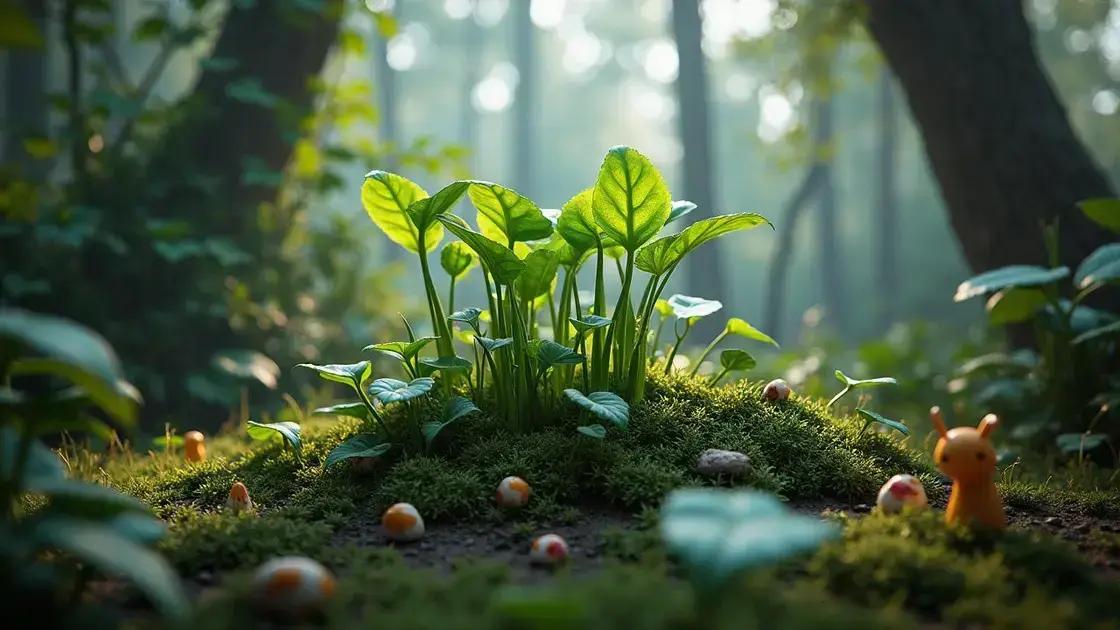How to Care for Fly Trap Plant: 5 Essential Tips for Thriving Growth
How to care for fly trap plant is a question many enthusiasts ask. These unique plants can be both fascinating and challenging. Knowing the right techniques can make all the difference in nurturing them effectively. Let’s dive into creating the ideal conditions for your fly trap plant.
Table of Contents
ToggleUnderstanding the environment for fly trap plant care
Understanding the environment for fly trap plant care is crucial for nurturing these fascinating carnivorous plants. Knowing their specific requirements can significantly enhance their growth and overall health.
Optimal lighting conditions
Fly trap plants thrive in bright, indirect sunlight. The ideal light exposure includes:
- 12-16 hours of light daily
- Avoiding harsh direct sunlight to prevent leaf burn
- Using grow lights if natural light is insufficient
Humidity requirements
Maintaining appropriate humidity levels is essential for the health of your fly trap plant. Aim for:
- 50% to 70% humidity
- Using a humidity tray or misting can help
- Keeping pots in a terrarium can provide a controlled environment
Temperature considerations
These plants generally prefer a range of temperatures:
- Optimal growth occurs between 70°F and 90°F (21°C – 32°C)
- Ensure that nighttime temperatures stay between 60°F and 70°F (15°C – 21°C)
Soil preferences
Using the right soil mix can greatly affect your fly trap plant’s success:
- A nutrient-poor, acidic blend is ideal
- A suggested mix is peat moss and perlite (2:1 ratio)
- Avoid garden soil or fertilizer, as they can harm the plant
Watering practices
Proper watering ensures that your fly trap plant stays healthy. Here are some tips:
- Always use distilled water or rainwater
- Keep the soil moist but avoid waterlogging
- In winter, reduce watering frequency as the plant goes dormant
By understanding the environmental needs of your fly trap plant, such as lighting, humidity, temperature, and soil, you can create an optimal growing setup. For more tips, consider exploring indoor gardening techniques. This knowledge will empower you to provide the best care for your unique indoor plant, ensuring its health and vitality.
Best watering techniques for your fly trap plant

Best watering techniques for your fly trap plant are essential to keeping your plant healthy and thriving. Proper watering helps maintain the right moisture level and sustains its unique growth conditions.
Understanding water quality
Using the right type of water is crucial for your fly trap plant’s health:
- Distilled water is ideal to prevent mineral buildup.
- Rainwater is an excellent alternative, providing natural purity.
- Avoid tap water due to chemicals like chlorine and fluoride.
Watering frequency
Finding the right watering schedule is vital:
- Check soil moisture before watering; the top inch should feel damp.
- In growing seasons (spring and summer), water more frequently.
- Reduce watering in winter when the plant is dormant.
Effective watering methods
When it comes to watering techniques, consider:
- Watering from below by placing the pot in a tray of water for 30 minutes. This method helps keep the soil consistently moist.
- Top-watering by pouring water gently around the base of the plant, ensuring not to drown the traps.
- Always drain excess water to avoid root rot, as fly trap plants are sensitive to oversaturation.
Monitoring humidity levels
Humidity plays a role in watering, as fly trap plants enjoy a moist environment:
- Maintain humidity levels between 50% and 70%.
- Consider using a humidity tray or misting your plant occasionally.
By mastering the best watering techniques for your fly trap plant, you ensure it stays in tip-top shape to catch those pesky insects! For more insights, check out exploring indoor gardening techniques. These tips not only boost the plant’s health but also enhance your experience as a grower.
Common issues and solutions for fly trap plants
Common issues and solutions for fly trap plants can help you maintain optimal health for your carnivorous plants. Being aware of potential problems and their fixes is vital for success.
Leaf blackening and die-off
If you notice the leaves of your fly trap plant turning black and dying off, it could indicate:
- Overwatering or staying too wet for extended periods.
- Exposure to extreme temperature fluctuations.
- Insufficient light, leading to stressed growth.
**Solution:** Adjust watering habits, ensure stable temperature, and provide appropriate lighting conditions.
Traps not closing
When traps fail to close, it may signal:
- Insufficient nutrients, especially if the plant is indoors.
- Traps are damaged or not functioning properly due to age.
- Poor environmental conditions, like low humidity.
**Solution:** Feed the plant with suitable insects, monitor humidity levels, and replace old traps if necessary.
Growth stagnation
If your fly trap plant isn’t thriving, it might be due to:
- Lack of sunlight, as they require 12-16 hours of indirect light.
- Improper watering techniques affecting moisture levels.
- Suboptimal soil conditions leading to root issues.
**Solution:** Increase light exposure, refine your watering practices, and check the soil for drainage.
Pest infestations
Common pests like aphids and spider mites can affect fly trap plants:
- Check for signs of infestation such as sticky residue or webbing.
- Regularly inspect plants for rogue insects.
**Solution:** Use insecticidal soap or neem oil for treatments, and keep your plant’s environment clean.
By addressing these common issues and their solutions, your fly trap plant can flourish in its environment. For even more detailed guidance, consider exploring indoor gardening techniques to ensure your plant remains healthy and vibrant.
In conclusion
Caring for your fly trap plant is a rewarding adventure that requires attention to its unique needs. By understanding the best environmental conditions, proper watering techniques, and addressing common issues, you can ensure your fly trap plant thrives. Remember to always seek out reliable resources to enhance your gardening knowledge. For more insights and tips on enhancing your indoor garden, engage with the community and share your experiences. Happy gardening!

